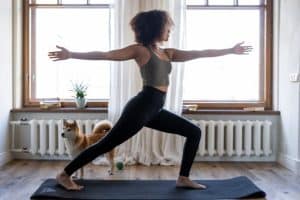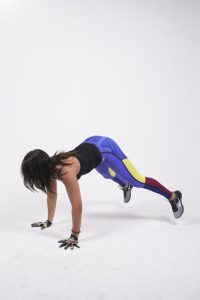The benefits of strength training are clear, however specific flexibility training is essential to add range and comfort of movement to your body. We have all woken up in the morning feeling a little creaky!
Whether you are training to improve at a specific sport like football, cricket or athletics or just want to feel better, flexibility training can help with toning and just make you improve faster.
Strength and flexibility training are complementary
There is a mistaken view that strength and flexibility training exist on opposite ends of the fitness spectrum and you must sacrifice one for the other.
In practice, they are not mutually exclusive but intrinsically connected elements contributing to functional movement and injury prevention.
When muscles are strong, they provide better support for joints, reducing the risk of injury during movements that demand flexibility. (As muscles contract, they generate tension on tendons, which attach to bones, stabilising joints).
Conversely, improved flexibility allows muscles and joints to move through a greater range, enhancing overall mobility, promoting efficiency, and reducing the likelihood of muscle imbalances or strains.
Balancing strength and flexibility training
The most effective fitness programmes have balance of good quality strength and flexibility training.
Incorporating resistance exercises to build strength and targeted stretches to enhance flexibility ensures whole body fitness. These exercises engage multiple muscle groups simultaneously promoting functional strength and flexibility across various planes of motion.
Sometimes it’s a matter of stretching and strengthening the same muscle in the same sequence of movements.
There are numerous exercises and kit that can help with both strength and flexibility.
One classic example is the Yoga Pose “Warrior II” or “Virabhadrasana II”. This pose is a combination of strength-building and stretching elements, making it an ideal illustration of the relationship between these two fitness styles.
- Stand with feet wide apart, with one foot facing forward and the other turned perpendicular.
- Bend the front knee, ensuring it aligns with the ankle, while keeping the back leg straight and strong.
- Engage the quadriceps and gluteal muscles to stabilise the lower body.
- The arms are extended parallel to the floor, with shoulders relaxed and palms facing down.

Another non-equipment exercise that combines strength and flexibility is burpees. The burpee, a squat thrust with an additional stand between repetitions, is a full body exercise used in strength training.
- Start standing, feet shoulder width apart.
- Crouch down and place your hands on the floor (count 1).
- Jump your feet into a high plank (count 2).
- Drop into the bottom of a push-up (count 3).
- Push back up to plank (count 4).
- Jump your feet forward to your hands (count 5).
- Stand up straight (count 6).
As far as equipment goes, we recommend our range of resistance bands and there is wide range of resistances and types available.
Further reading
Busy Dad burpee transformation
The symbiotic relationship between strength and flexibility training
Photo by Polina Tankilevitch: https://www.pexels.com/photo/woman-in-black-sports-bra-holding-a-yellow-resistance-band-6516209/
Photo by cottonbro studio: https://www.pexels.com/photo/woman-girl-animal-dog-4056510/
Photo by Andrea Musto: https://www.pexels.com/photo/female-athlete-performing-burpee-in-studio-setting-30246184/


